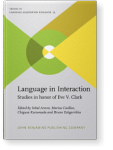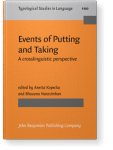Penelope Brown
List of John Benjamins publications for which Penelope Brown plays a role.
2014 The interactional context of language learning in Tzeltal Language in Interaction: Studies in honor of Eve V. Clark, Arnon, Inbal, Marisa Casillas, Chigusa Kurumada and Bruno Estigarribia (eds.), pp. 51–82 | Article
This paper addresses the theories of Eve Clark about how children learn word meanings in western middle-class interactional contexts by examining child language data from a Tzeltal Maya society in southern Mexico where interaction patterns are radically different. Through examples of caregiver… read more
2013 The acquisition of agreement in four
Mayan languages The Acquisition of Ergativity, Bavin, Edith L. and Sabine Stoll (eds.), pp. 271–306 | Article
This paper presents results of a comparative project documenting the development of verbal agreement inflections in children learning four different Mayan languages: K’iche’, Tzeltal, Tzotzil, and Yukatek. These languages have similar inflectional paradigms: they have a generally agglutinative… read more
2012 To ‘put’ or to ‘take’? Verb semantics in Tzeltal placement and removal expressions Events of Putting and Taking: A crosslinguistic perspective, Kopecka, Anetta and Bhuvana Narasimhan (eds.), pp. 55–78 | Article
This paper examines the verbs and other spatial vocabulary used for describing events of ‘putting’ and ‘taking’ in Tzeltal (Mayan). I discuss the semantics of different ‘put’ and ‘take’ verbs, the constructions they occur in, and the extensional patterns of verbs used in ‘put’ (Goal-oriented) vs.… read more
2012 Put and Take in Yélî Dnye, the Papuan language of Rossel Island Events of Putting and Taking: A crosslinguistic perspective, Kopecka, Anetta and Bhuvana Narasimhan (eds.), pp. 273–296 | Article
This paper describes the linguistic treatment of placement events in the Rossel Island (Papua New Guinea) language Yélî Dnye. Yélî Dnye is unusual in treating PUT and TAKE events symmetrically with a remarkable consistency. In what follows, we first provide a brief background for the language, then… read more


